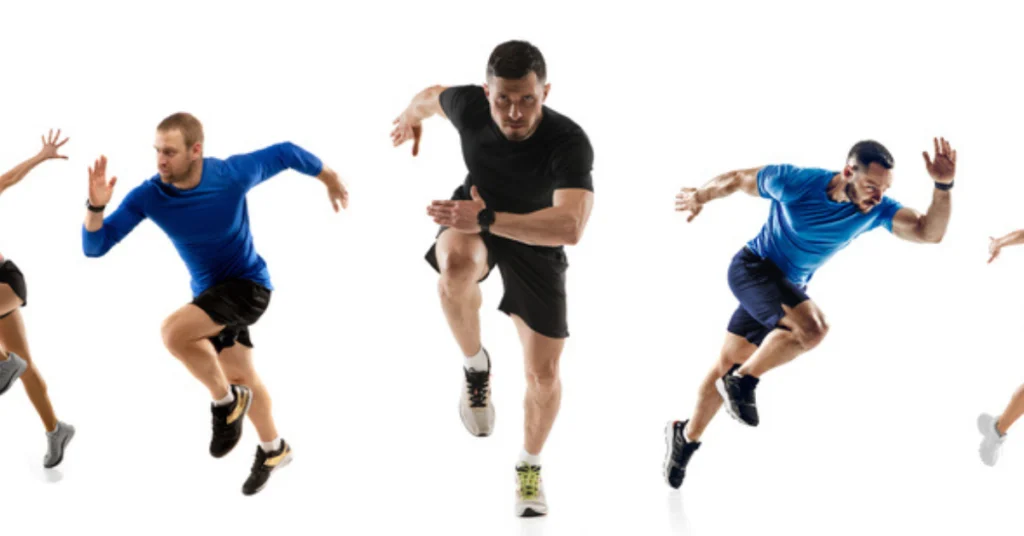Running is about more than simply putting miles on the clock; it is also about developing a robust and powerful physique. So Integrating physical activity into your running program may improve your running efficiency and injury prevention.
Muscle weakness may knock off your sprinting technique, decreasing your performance and increasing your risk of injury. Strength training is an amazing exercise for both muscles and the bones, but do you know it may also improve your running performance?
These workouts can help you become a more strong and efficient runner. Let’s look at the top ten strength workouts that any runner should incorporate into their routine.
Why Strength Training for Runners?
While jogging primarily activates your lower body, strength training provides a more comprehensive approach by addressing many muscle groups. This not only improves performance but also lowers the danger of injury. Let’s look at some particular workouts that might help runners.
1. Squats: Building Leg Strength
Squats are a basic strength exercise that works the quadriceps muscle group, hamstrings, and glutes. Proper squats technique not only increases strength in the legs but also helps with running form.
2. Lunges: Enhancing Stability and Balance
Lunges exist in two varieties: forward and lateral, and they aid with stability and balance. These workouts work stabilising muscles, which are essential for maintaining appropriate running mechanics.
3. Deadlifts: Engaging the Entire Body
Deadlifts are a high-intensity workout that works several muscle groups, particularly the backbone, hamstrings, and core. They help with general strength and stability, which is important for athletes who run on different terrains.
4. Planks: Core Strength for Better Posture
Maintaining proper posture while running requires a strong core. Planks and its variants focus the core muscles and help with stability and endurance.
5. Calf Raises: Strengthening Lower Leg Muscles
Calf raises concentrate on the lower muscles of the legs, which are essential for a runner’s propelling force. By strengthening these muscles, you can avoid frequent problems like shin splint and calf strains.
6. Bridges: Activating Glutes and Hamstrings
Bridges engage the thighs and hamstrings, allowing for hip extension when running. Strong glutes are essential for effective running and injury prevention.
7. Leg Press: Targeting Quadriceps
Leg press workouts target the quadriceps particularly. These muscles can be strengthened to enhance stability in the knee and running performance.
8. Push-ups: Upper Body Strength
While running is predominantly a lower-body sport, upper-body strength is essential for general stability. Push-up variants work the upper body, shoulders, and arms, resulting in balanced strength.
9. Step-Ups: Mimicking Running Motion
Step-ups mimic the running motion by concentrating on the quads and glutes. This exercise improves single-leg stability and power, which is necessary for keeping a steady stride.
10. Russian Twists: Rotational Stability
Running necessitates rotational motion, and Russian twists are excellent for building rotational stability. This exercise stimulates the core, making it easier for runners to manage turns.
Pull-Ups: Building Upper Body Endurance
In addition to the strength training activities described above, “Pull-Ups” serve an important part in developing upper body endurance. Pull-ups work the upper body, particularly the abdomen and arms. Building torso endurance is important for maintaining excellent running form, especially on long runs.
Incorporating Strength Training into Running Routine
It is critical to strike the proper balance among running and weight training. Implementing these workouts 2-3 times during a week can have a significant impact. Consider creating a weekly program to supplement your running regimen.
Common Mistakes to Avoid
While muscle building is useful, overtraining can result in tiredness and an increased risk of injury. Allow yourself adequate rest and recuperation time between sessions. Pay attention to your body and alter the intensity as needed.
Frequently Asked Questions ( FAQ’S )
Q1. How often should runners incorporate strength training into their routine?
Opt for 2-3 strength workouts each week, with ample rest time in between.
Q2. Can these exercises be done at home without gym equipment?
Yes, most of these exercises may be adapted for use at home with little or no equipment.
Q3. Are these exercises suitable for beginner runners?
Yes, beginners can begin with simplified versions and work their way up to the complete exercises.
Q4. Is it necessary to warm up before strength training for running?
Warming up is essential for preparing the joints and muscles for the activities. Include dynamic stretches.
Q5. How long does it take to see the benefits of strength training for running?
Consistency is essential. While some advantages may be apparent within a few weeks, changes that last need continuing dedication.
Conclusion
Finally, the top ten strength exercises for runners offer a complete approach to developing a strong and robust physique. Including these workouts in your program can improve your running performance while also contributing to a healthier, more injury-resistant body. So put on your running shoes and be ready to improve your stride.
